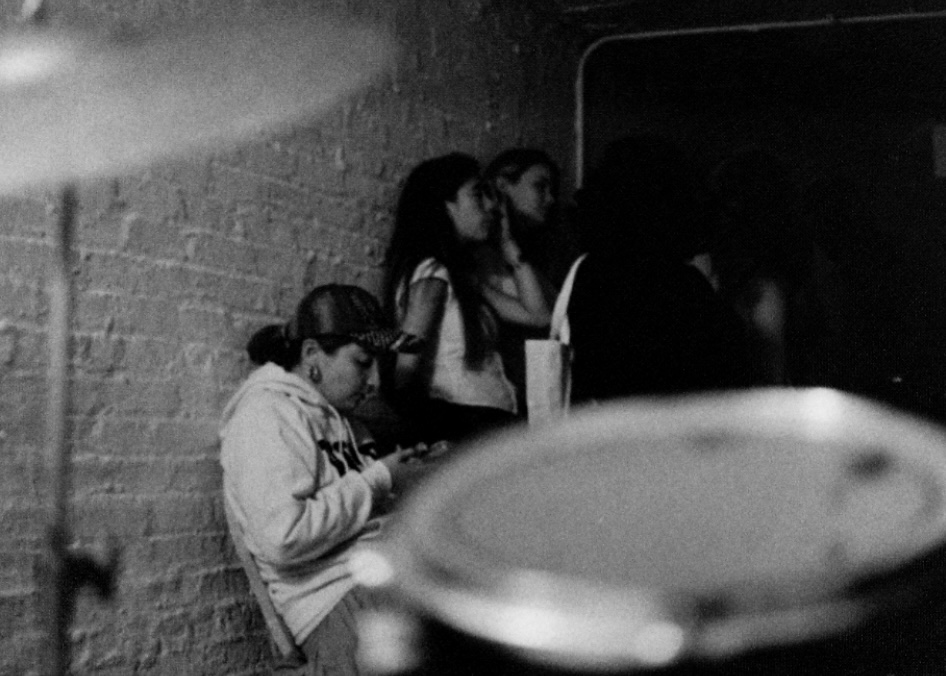I was exploring downtown just the other day, revisiting some old haunts from my childhood, and found myself shopping at the Water Tower Place. The last time I’d been there, easily over a decade ago at this point, I distinctly recall the bustling multitudes of families and friends milling about the massive mall, going in and out of the rotating doors that separated it from the equally busy plaza outside. This time, though, I experienced the convenience of unobstructed sightlines, spacious halls, and none of the lines that I remember waiting in to get into my favorite store (it’s still the LEGO store). However nice it was to not have to wade through the hordes of kids competing for the sets I wanted, though, it did feel a bit off; I kind of missed the feeling of community that came with the crowds. Thankfully, I still had whole communities in my phone to keep me company. Texts from my parents, Instagram reels from my friends, emails from various newsletters and RSOs—I had plenty of outlets to satisfy any desire I might have had to interact with other people, but I think that convenience might have been the cause of those empty halls to begin with.
In just the last 20 years, we have been given, in our pockets at all times, instant access to information and connection (however superficial). Thus, our natural desire to interact with each other no longer requires face-to-face encounters and can instead be appeased at any time by simply pulling out a phone. While we used to visit “third spaces” —malls, parks, or libraries—to hang out with friends or meet new people, social media has stepped in as a more convenient option. Moreover, even when people are placed in situations ripe for social interaction—a classroom before the professor arrives or an elevator with strangers—the norm has become to keep to oneself; we start doing work or interacting with others on our phones. That way, we circumvent the awkwardness of introducing ourselves to strangers face-to-face. Even and especially when it comes to dating, more and more couples are meeting online, with it becoming increasingly uncommon to introduce oneself to a stranger and ask them out in person. Why bother when we have apps that conveniently provide access to hundreds of people already looking for romance?
So many activities that used to be common opportunities for socialization—shopping, eating at a restaurant, and watching live sporting events—can now all be done from the comfort of one’s own room, something that was realized by so many people during the pandemic. This is precisely why no meaningful resurgence of the many restaurants, malls, and physical retail stores that closed during the pandemic has occurred in the years since. As technology not only advanced but adapted to a new market during quarantine, people’s capabilities to enjoy leisure activities without having to leave their homes increased drastically. Simultaneously, anyone who had not already acquainted themselves with such conveniences were made to do so, becoming intimately familiar with the wonders of food delivery services, online shopping, and many different social media platforms.
Forced to compete with the newfound convenience of the virtual world, in-person socialization has necessarily leaned into things only the real world can provide. More and more, events are having to provide and intensify incentives for socialization that can only be enjoyed in person. These can range from sports, workouts, hiking, and boating to raves, sex, alcohol, and other recreational substances. Look no further than the social scene at our own university as an example, where the party scene is restricted to clubs, fraternities, and the occasional house party thrown by upperclassmen and grad students.
One might expect UChicago’s housing policy, which requires that undergraduate students stay in student housing for their first two years, to incentivize more social events in any of the dorms’ numerous social spaces, but quite the opposite phenomenon can be observed. Since these spaces are under the watch of the University’s housing administration, students aren’t nearly as free to partake in alcohol, other drugs, or hookup culture. Conversely, clubs, frats, and non-dorm housing offer spaces away from these regulations. Thus, these increasingly necessary incentives for socialization may be offered without disturbance. Is it any surprise, then, that more and more students are choosing to attend house parties and frat functions over things like house-sponsored events?
This is why it has become such a struggle to garner consistent attendance for house and building meetings or activities in recent years. The strategy for drumming up attendance has necessarily turned to the sliver of in-person incentives that can be offered by housing, which are often just free food or tame attempts at replicating the environment of a full-on party. It is simply a matter of competition—the opportunities for conversation and community that housing once provided can now be replicated virtually, and thus what incentives remain usually pale in comparison to the more exciting options available in less regulated spaces or in more involved, less accessible activities.
So where does all of this leave us? The virtual age provides us with increasingly convenient ways to satisfy most of our needs and desires without any need for real-world human interaction. As such, our time together is restricted to a dwindling number of activities that can only be enjoyed in person. Moreover, as many of these activities are inaccessible or require considerable investment or effort, such as with running, making art, or traveling, many of us are further confined or gravitating toward the aforementioned easier—and often higher-risk—options found at parties and clubs. Thus, while there are obviously inherent benefits to our modern conveniences, it is also clear that they are extracting a cost. Whether or not we believe that cost is worth paying is a discussion we need to be having as, with every day that passes, that decision becomes increasingly difficult to reverse.
Ibrahim Shaheen is a second-year in the College.














